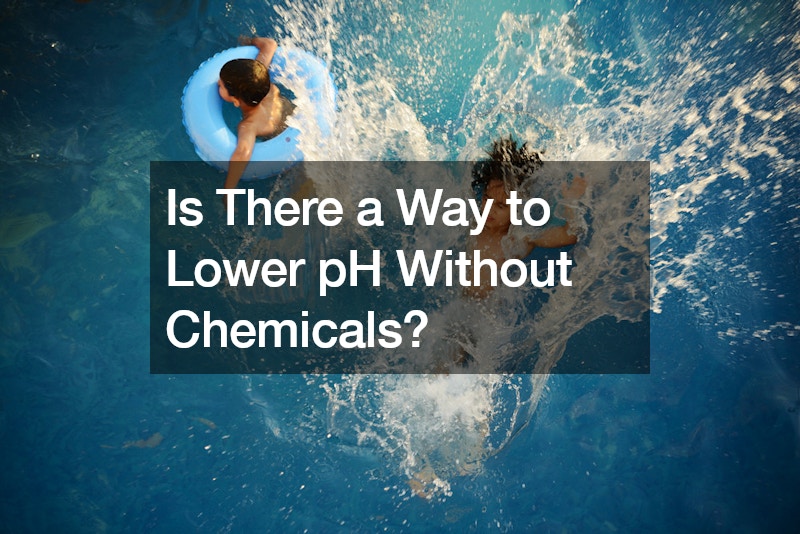Is There a Way to Lower pH Without Chemicals?


Maintaining the pH balance of a swimming pool is essential for ensuring water quality and safety. Typically, pool owners rely on chemicals like muriatic acid or sodium bisulfate to lower pH levels. However, some pool owners seek alternative methods to reduce chemical usage due to health, environmental, or personal preferences. While there are limited options for lowering pool pH without chemicals, some methods can help manage pH levels more naturally.
Using Carbon Dioxide (CO2) Injection
One effective method to lower pool pH without chemicals is by using carbon dioxide (CO2) injection. CO2 dissolves in water to form carbonic acid, which lowers the pH.
This process is similar to how carbonated beverages are made acidic. CO2 injection systems are relatively sophisticated and typically used in commercial or large residential pools. The advantage of using CO2 is that it lowers pH without significantly affecting total alkalinity, providing a more balanced approach to pH management. However, it requires an initial investment in the equipment and a steady supply of CO2.
Aeration and Natural Processes
Another method involves increasing aeration in the pool. Aeration can be achieved by using water features like fountains, waterfalls, or simply by running the pool’s jets. When water is agitated, it encourages the release of carbon dioxide from the water into the air. This process can help lower the pH over time, although it tends to raise the total alkalinity, which might require additional adjustments. Aeration is a slower process and might not be sufficient for quickly correcting high pH levels but can be a useful supplemental technique.
Adding Organic Matter
Some natural methods suggest adding organic matter, such as peat moss, to the pool. Peat moss can lower pH as it decomposes and releases organic acids into the water. This method is more commonly used in natural swimming ponds rather than traditional pools. It requires careful management to avoid negative impacts on water clarity and sanitation. The use of organic matter is not widely recommended for standard swimming pools due to potential complications with filtration and water quality.
Managing Pool Environment
Managing external factors that contribute to pH fluctuations can also help reduce the need for chemical adjustments. For example, regularly cleaning the pool to remove debris, leaves, and organic contaminants can prevent them from decomposing and affecting the pH. Additionally, maintaining a balanced pool chemistry, including proper alkalinity levels, can help stabilize pH naturally. Covering the pool when not in use to minimize exposure to contaminants and reducing the introduction of tap water, which can have high pH levels, can also aid in maintaining a balanced pH.







